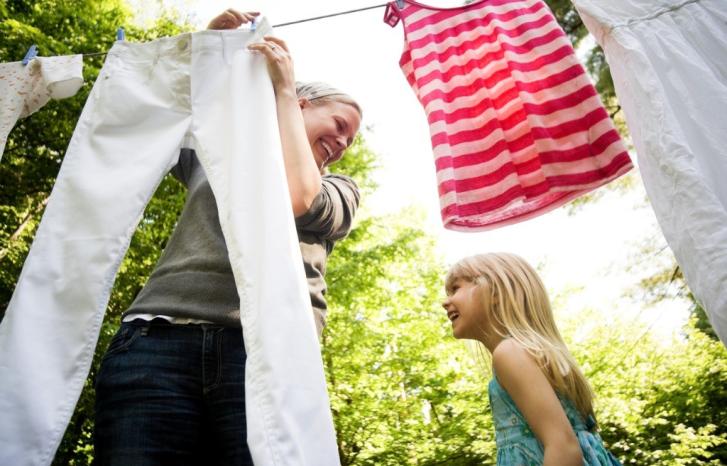The summer of 2021 has been characterised by extreme heatwaves, forest fires and catastrophic floods. The recent alarming climate report from the UN declares that we need to take radical measures in order to combat climate change. Does gender equality have any significance when it comes to the transition to a low-carbon society? Is it possible that the transition might lead to less gender equality? Or is it possible that the green shift will provide new opportunities to rethink deep-rooted social patterns such as the gendered employment market?
‘The green shift’ involves a transition to a more sustainable and climate friendly society, with a green economy, more green jobs and lower greenhouse gas emissions. Both the UN’s sustainable development goals, the EU Commission and the Norwegian government emphasise that ‘the green shift’ is dependent on social equalisation and gender equality. The climate policy should not affect people unfairly, but rather ensure that high employment is maintained. Social and economic sustainability is part of the climate friendly society for which we strive.
Lack of knowledge
Before summer, OECD published a report about gender, climate and the environment. The report maintains that there is a lack of knowledge in this field. This is worrying, as the report states that we cannot achieve a climate friendly society unless we include a gender and equality perspective. The little research we do have on this area revolves around conditions in developing countries. Hardly any research connects gender, equality and climate in a Norwegian or Nordic context.
There is a lack of integration of gender and equality perspectives in national climate policies and in research on climate and environment issues.
According to OECD, several factors prevent women from participating in the green shift. One of them is the low share of women within the natural sciences and technology in higher education. Another factor is the lacking integration of gender and equality perspectives in national climate policies and in research on climate and environment issues.
Gender equality as a resource in the green shift
OECD thus points out the importance of gender equality, but despite the Norwegian government’s emphasis on this aspect, gender and equality perspectives are neither part of the national policy for a green transition nor the political parties’ party programmes.
We know that gender equality and women’s participation on the employment market has been more important than petroleum for the development of the Norwegian welfare state. Economist and former Prime Minister Jens Stoltenberg once said that if Norwegian women had been working as little as what was average for women in the OECD countries, the loss in value would have equalled our entire oil wealth. Women’s entry to the employment market and higher education has been vital for our welfare. Therefore, there is a lot at stake now that society is facing such a major change as the green shift.
Women’s participation on the employment market has been more important than petroleum for the development of the Norwegian welfare state.
In connection to this shift, however, hardly anyone talks about what consequences the coming transitions may have for gender equality, whether it is in relation to the development of new jobs in the public and private sector, in relation to energy or the fiscal policy, or in research and higher education. What if the green shift results in more gender inequality?
Should we perhaps instead follow former Prime Minister Stoltenberg’s reasoning and turn the whole question around?: Gender equality is a necessary precondition in order to succeed with the green shift for the entire population. The big picture shows that students’ choice of education is highly gendered and that we have a gendered employment market. Women dominate in the health and care sector and largely work in the public sector, whereas the majority of the men work within the natural sciences and technology and in the private sector. The green shift is primarily business and technology driven. That is where the jobs of the future lies.
What if the green shift results in more gender inequality?
Women therefore risk not being included in this particular part of the employment market and miss out on the opportunity to participate in the important development that is currently taking place. At the same time, we know that the health and care sector is in dire need of workforce. In what way will the green shift affect our future work life in this area? The question is complex. If more people orient themselves towards technology and the natural sciences, we will see a larger shortage of workforce in the health and care professions, unless these professions manage to attract more men. This scenario is also a possible consequence of the green shift.
Who controls the natural resources?
In 2018, UN Women released a report demonstrating the relevance of gender and equality for the sustainability goals. Not surprisingly, the report places more emphasis on poverty and developing countries in which women primarily take care of the food supplies. The situation in developed countries is a different one. Although we do feel the climate changes, such as this summer’s record-high precipitation, heat and drought illustrate, we have to a very little extent discussed the way in which the various population groups are affected differently, even here in Norway.
We do know that nature management is an issue of explosive power, as we have recently seen in the wind power debate in Norway. Do women and men have different preferences when it comes to the use and conservation of nature? Aase Kristine Lundberg at Nord University has studied Norwegian outfields management in her PhD thesis. She asked how Norwegian nature is used and which natural resources are considered valuable. Is it the conservation of the local environment for hikes in the forest and mountains that is considered most valuable, or is it the ground that secures small game hunting?
Little research on Norwegian nature management has a gender and equality perspective.
The county governor and the municipalities are responsible for the outfields management. Lundberg points out that although they are subject to the provisions of the Gender Equality Act on forty per cent women in the boards, there are also other mechanisms at play. Such mechanisms may be whether the representatives come from the municipalities or the county and whether women and men’s use of nature is up for discussion at all. As of today, little research on Norwegian nature management has a gender and equality perspective.
The way in which we manage our natural resources is ultimately about co-determination and democracy. In order to ensure a sustainable management of our nature, we need a larger diversity of experiences, values and visions.
Are women more engaged in climate than men are?
Toxic waste from mining operations in the Nussir Mountain has mobilised activists to the Reppar fjord in Northern Norway throughout the entire summer. Is it a coincidence that women are overrepresented among the environmental activists? Numbers from Statistics Norway (2011) show that women are more willing to change their habits for environmental reasons than men are.
Numbers from Statistics Norway show that women are more willing to change their habits for environmental reasons than men are.
Research also indicates that a gender perspective on climate and environment gives more climate friendly solutions. Transport researcher Tanu Priya Uteng says in an interview with Kilden’s news magazine that today’s cities are planned on the basis of men’s movement patterns while women’s travel habits will give us greener cities. Another example of the same tendency is that Norway is among the best countries in the world when it comes to the number of cyclists. Research indicates that men make up the majority of the cyclists in countries that are poorly adapted for bicycles. This is also the case with Norway. With more and safer bicycle paths, more women will choose the bicycle as their preferred means of transport. At the same time, we see that more women than men choose electric bicycles for transportation.
Gender equality as sustainability goal
The UN has declared gender equality as a sustainability goal of its own. The goal of gender equality is transverse and a precondition for reaching the other sustainability goals, such as combating climate change, reducing inequality, securing better health and quality of life for all, promoting a decent work life and economic growth. In other words, the sustainability goals involve an assessment of the consequences of gender equality when measures are being developed.
Although climate reports emphasise the need for action and fast decisions, the means should be based on knowledge. Norway is considered a pioneer on gender equality internationally, and should be in front in securing the necessary knowledge and filling the knowledge gaps concerning the gender and equality challenges of the green shift. This opens for several interesting questions related to how gender and equality considerations are looked after in the green transitional process, even here in the gender equality country Norway. Such questions will be brought up for discussion by Kilden in November when we are organising a conference on gender equality in the green shift.
This article was first published in Norwegian in Agenda Magasin.
Translated by Cathinka Dahl Hambro.



